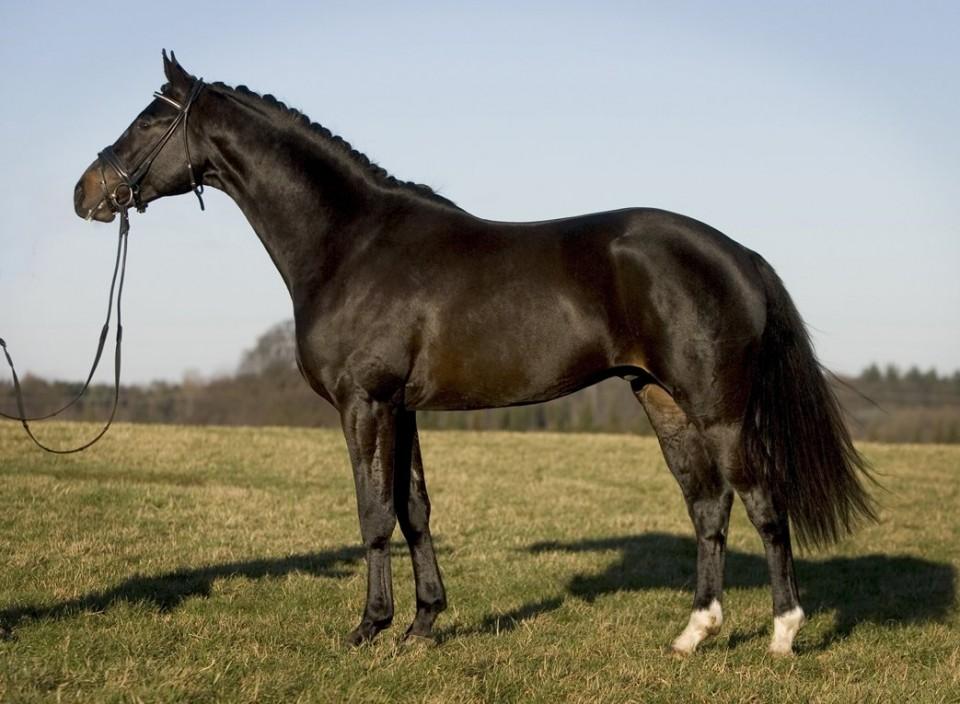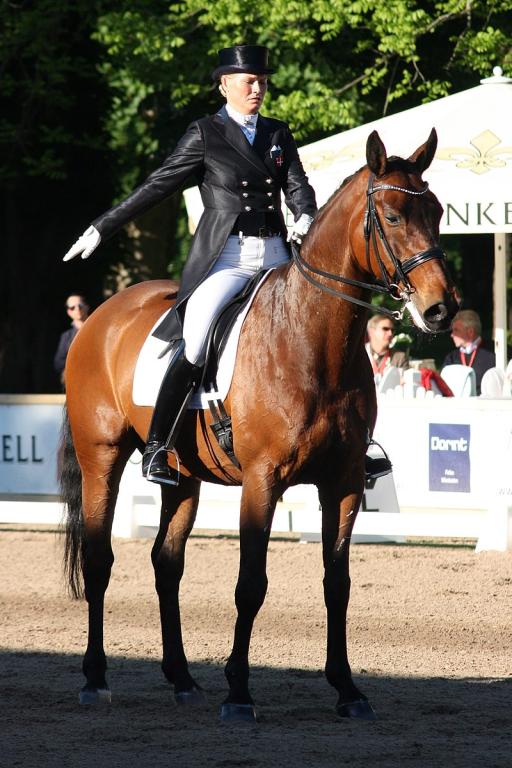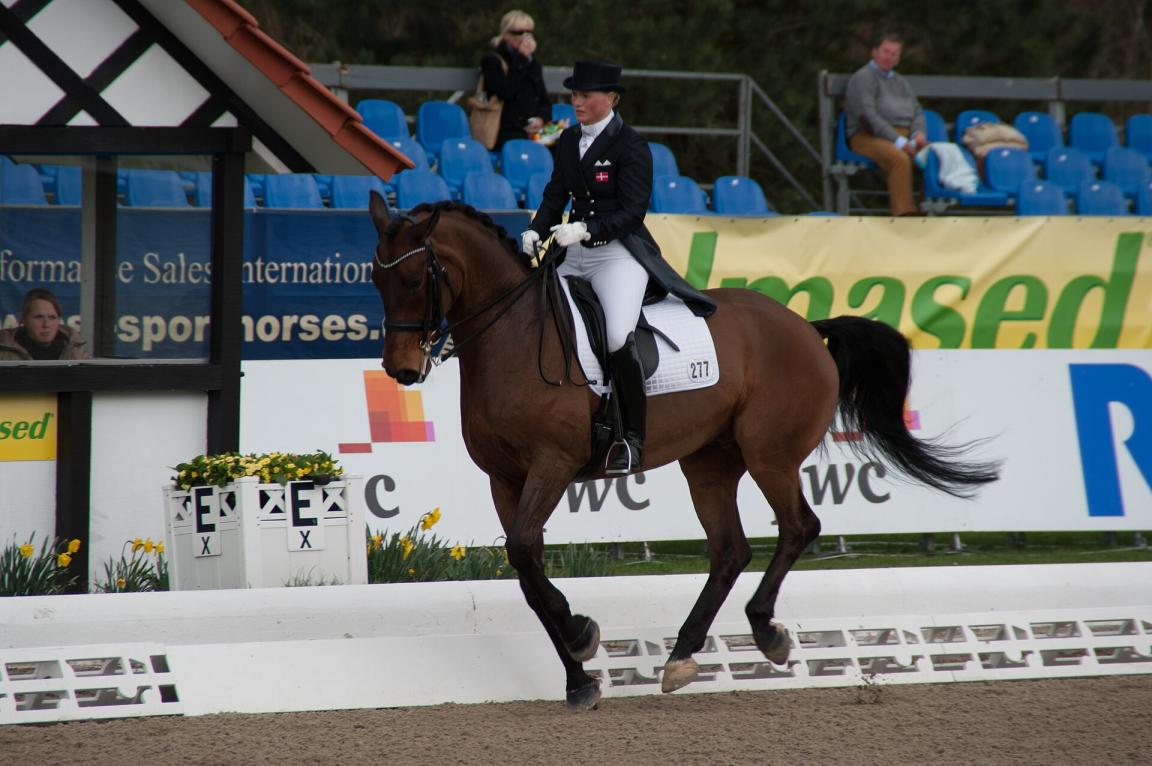
Continent: Europe
Country: Denmark
Weight: 550 – 650 kg
Height: 165 – 175 cm



The Danish Warmblood (Dansk Varmblod) is a sport horse breed developed in Denmark, Northern Europe, starting in the 1960s.
It was the result of a national initiative to create a high-performance horse for Olympic disciplines, through crossbreeding Frederiksborgs, Holsteiners, Oldenburgs, and Thoroughbreds, later incorporating Trakehner and Selle Français bloodlines.
This breed, shaped by a modern breeding program, reflects a Danish equestrian culture focused on high-level competition, but also on elegance, balanced temperament, and versatility.
The birthplace of the Danish Warmblood is Denmark, mainly in the Jutland region, where the Dansk Varmblod association is headquartered. Breeding is also active throughout the country, especially around Vilhelmsborg and Herning, two key locations for stallion approval events.
Internationally, the breed is now raised in several countries thanks to its sporting success:
- United States (notably in Colorado, Connecticut, and Louisiana)
- United Kingdom
- Australia
- Latvia (where it contributes to the development of the Latvian horse)
These regions actively support the spread and recognition of the breed through top-level dressage and show jumping disciplines.
The Danish Warmblood plays a significant role in the genetics of modern sport horses, particularly in dressage and show jumping. Thanks to a strict selection process based on performance, temperament, and conformation, it has contributed to improving gait quality, joint flexibility, and docility in European sport horse lines.
Its stud-book is open to controlled crossbreeding with other warmblood breeds such as the Trakehner, Selle Français, KWPN, and Holsteiner, allowing for high genetic diversity while maintaining elevated standards.
The breed has also been used to enhance Latvian horses and is involved in genomic selection programs, making it an important contributor to modern equine breeding in Europe.
The Danish Warmblood (Dansk Varmblod) is a modern breed, born from a national initiative to create a high-performance sport horse.
Its stud-book was established in 1962, with a foundation of mares primarily from Oldenburg, Holsteiner, Frederiksborg, and Thoroughbred lines.
From the outset, the goal was clear: to produce a horse capable of competing at the international level, especially in dressage and show jumping. In the 1980s, the mare Marzog, ridden by Anne Grethe Jensen-Törnblad, made a strong impression at the European Championships, placing Denmark on the world dressage map.
The breed was structured with the creation of the Dansk Varmblod association, the development of strict performance and conformation tests for breeding stock, and the controlled inclusion of foreign bloodlines. Unlike many other warmblood breeds, it was not influenced by the Hanoverian in its early stages, giving it a distinctive type.
Today, the Danish Warmblood is recognized as one of the world’s leading sport horse breeds, with a strong reputation in breeding, dressage, and show jumping, and a growing international presence.
The Danish Warmblood is known for its gentle, balanced, and willing temperament. Selected not only for athletic ability but also for its cooperation with humans, it is generally sociable, intelligent, and responsive, making it suitable for both daily work and high-level dressage.
Its lively yet controlled nature makes it a responsive but manageable horse, ideal for experienced riders. While calm and obedient, it can also be energetic and expressive under saddle, making it a valuable partner in competition.
The stud-book also promotes horses with a strong learning ability, capable of handling the pressure of competition while remaining attentive and cooperative with the rider.
The Danish Warmblood has very promising prospects, especially in international dressage, where it is already among the top-performing breeds.
The Dansk Varmblod breeding programs include ambitious goals:
- further improving locomotion and suppleness,
- strengthening cooperative temperament and learning ability,
- and integrating genomic selection to shorten the generational interval.
Global demand for athletic, balanced, and competitive horses supports the breed’s development, particularly in Northern Europe, North America, and Oceania.
The current trend is toward progressive specialization of bloodlines (either dressage or jumping), while maintaining genetic diversity through controlled crossbreeding with other stud-books.
The Danish Warmblood is well positioned to continue competing with the world’s top sport horse breeds, such as the KWPN and the Hanoverian.
The Danish Warmblood is generally a robust and well-monitored breed in terms of health, thanks to strict veterinary examinations required for breeding approval. Horses admitted to the stud-book must demonstrate good fertility, excellent overall health, and be free from known hereditary defects.
No specific genetic disease is endemic to the breed, but as with all warmblood sport horses, special attention should be given to joints and the locomotor system, due to the demands of training and rapid growth in young horses.
The hooves are typically of good quality, with hard, well-formed horn, and are rarely problematic when proper care is provided. The progressive integration of genomic selection aims to prevent potential genetic weaknesses over the long term.
Four-beat gait, regular and relaxed. The Danish Warmblood displays a long, supple, and energetic walk, with good engagement of the hindquarters and smooth shoulder action. It is a key gait in dressage, evaluated for its clarity and looseness.
Two-beat diagonal gait with a moment of suspension between strides. The Danish Warmblood has an elastic, expressive, and elevated trot with strong impulsion. The extended trot is often a highlight among top representatives of the breed.
Three-beat gait, balanced and dynamic. The Danish Warmblood's canter is round, rhythmic, and uphill, with strong engagement of the hindquarters. This gait is essential for both dressage and show jumping disciplines.
Born on 01/01/1997
Silver medal in dressage at the 2006 World Equestrian Games in Aachen, ridden by Andreas Helgstrand. Her freestyle performance went viral online thanks to its grace and expression, helping to make the Danish Warmblood known worldwide.
Born on 01/01/1973
Iconic figure of Danish dressage, Marzog won the individual gold medal at the 1983 European Championships with Anne Grethe Jensen-Törnblad. He placed Denmark among the leading dressage nations and is considered a pioneer in the international recognition of the breed.
Born on 01/01/2009
Triple world champion of young horses: gold medal at age 5 (2014), 6 (2015), and 7 (2016). Sezuan became a reference sire for dressage, known for his exceptional gaits and outstanding genetics.